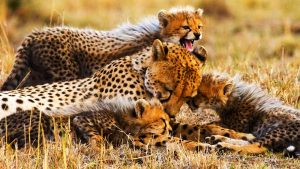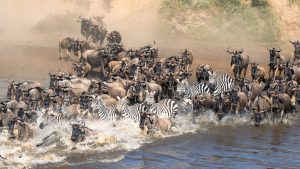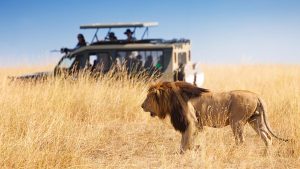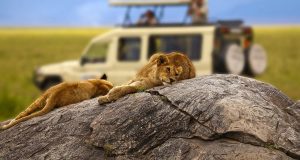Quick Facts
About Kilimanjaro National Park
Peak Time
June - October
Best Time To Go
Year-round, but best climbing conditions from June to October and January to March
Famous For
Africa’s highest mountain, Mount Kilimanjaro
Home Of
Mount Kilimanjaro, diverse ecosystems, and unique wildlife
Overview
Climbing Mt. Kilimanjaro is the highlight of most visitors’ experiences in Tanzania. Few mountains can claim the grandeur, the breathtaking views of Amboseli National Park in Kenya, the Rift Valley, and the Masaai Steppe, that belongs to Kilimanjaro. Hiking on the ‘rooftop of Africa’ — the highest point on the continent at 5896 metres — is the adventure of a lifetime, especially because, if paced well, everyone from seasoned trekkers to first-time enthusiasts can scale the snowy peak. For more information, see the ‘Mountain Climbing‘ section under ‘Things to Do.
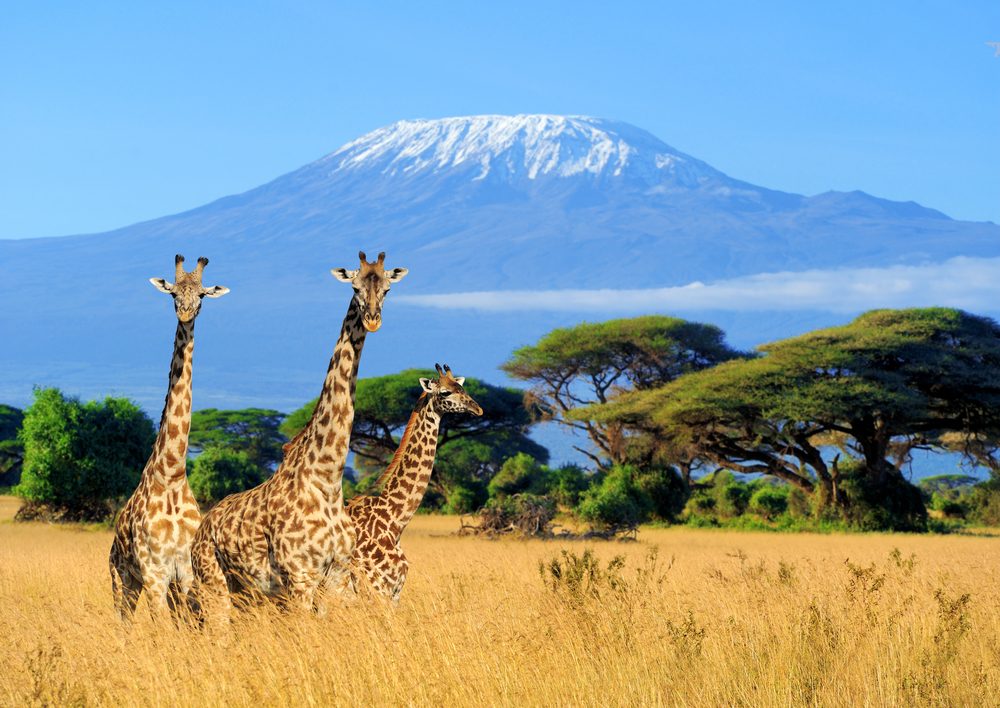
Wildlife
Kilimanjaro. The name itself is a mystery wreathed in clouds. It might mean Mountain of Light, Mountain of Greatness or Mountain of Caravans. Or it might not. The local people, the Wachagga, don’t even have a name for the whole massif, only Kipoo (now known as Kibo) for the familiar snowy peak that stands imperious, overseer of the continent, the summit of Africa.
Scenic Landscapes
Kilimanjaro National Park is renowned for its diverse and striking landscapes that change dramatically as you ascend the mountain. Starting in the lush rainforests of the lower slopes, trekkers pass through moorlands dotted with giant groundsels and heathers, and then enter the alpine desert zone, characterized by barren landscapes and rugged volcanic rock. At higher altitudes, the climbers are rewarded with panoramic views of snow-capped peaks, glaciers, and the vast African plains below. The views from the summit, Uhuru Peak, are breathtaking and offer a once-in-a-lifetime experience as the highest point on the continent.
Routes
When it comes to talking about trails, really you are talking about routes up the mountain. There are seven different routes that provide opportunities for the ascent to the summit.
Southern Routes: Marangu, Machame, and Umbwe are the three routes that ascend from the south.
Western Routes: Lemosho, Shira, and Northern Circuit are the three routes that ascend from the west.
Northern Route: There is only one route that ascends from the north known as Rongai.
The Marangu Route, affectionately called the Coca Cola Route, is one of the more popular routes for the traditional visitor. It features one of the more gradual slopes as well as provides sleeping huts along the way. It is the oldest and most established route.
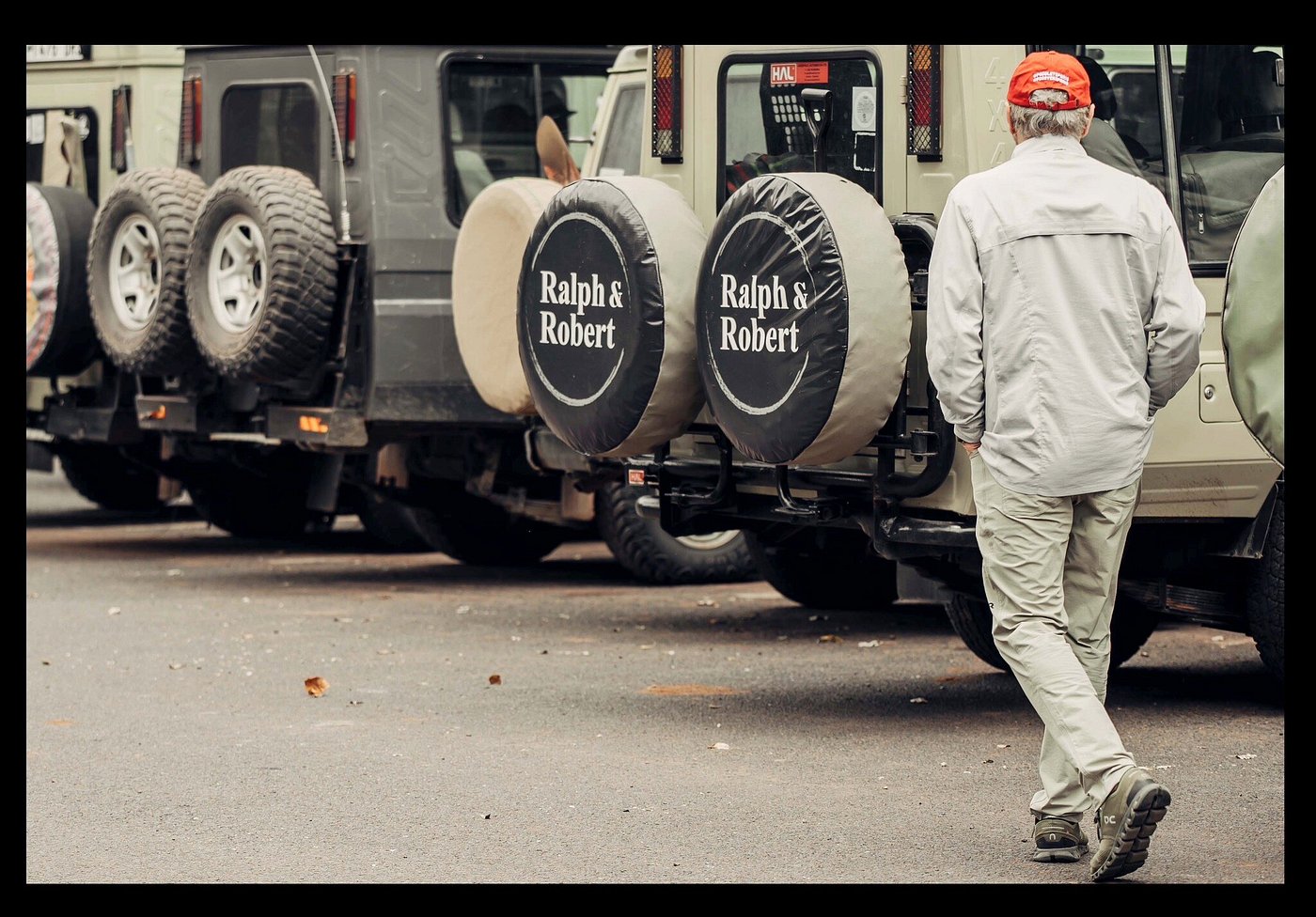
Inspired by What You See? Let’s Bring Your Journey to Life!
Best Time to Visit
Tourists have a chance to cycle inside the park. There are two routes, one for summit bound visitors (Kilema route) and second one for non summit visitors (Shira plateau). These routes are equipped with picnic sites and resting points.
Accommodation
Lodging choices for Kilimanjaro National Park visitors vary from basic huts along the Marangu Route to tented campsites on alternative climbing paths. For non-climbers, a variety of lodges and hotels in nearby towns like Moshi and Arusha offer cozy retreats with spectacular mountain vistas. Many of these options feature amenities for post-trek relaxation, such as hot showers, tasty meals, and friendly service.
Why Visit Kilimanjaro National Park
Kilimanjaro National Park is a globally celebrated spot, presenting the exhilarating challenge of conquering Africa’s tallest peak. Beyond the ascent, its rich array of ecosystems, distinctive wildlife, and breathtaking scenery make it an essential stop for those craving adventure, natural splendor, and a bond with one of the planet’s most iconic wonders. Whether you’re pushing to the summit, wandering the lower forests, or gazing at the snow-dusted peak from afar, Mount Kilimanjaro delivers a memorable journey for all who visit.

